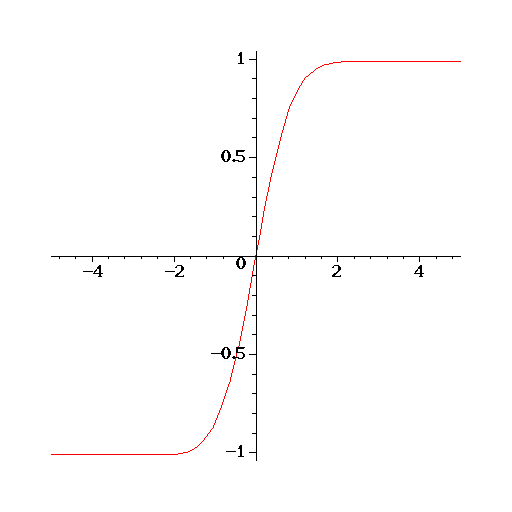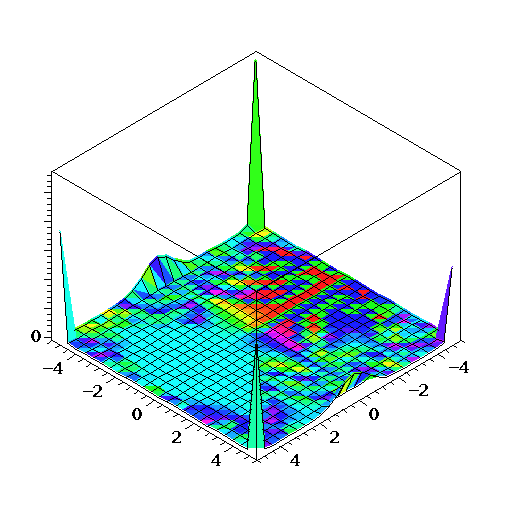ERF Error Function
ERF.1 Introduction |
top up back next into bottom |
Let
 be a complex variable of
be a complex variable of
 .The function Error Function (noted
.The function Error Function (noted
 ) is defined by the following second order differential equation
) is defined by the following second order differential equation
| ERF.1.1 |
The initial conditions of ERF.1.1 are given at
 by
by

|
ERF.1.2 |
Related function: Complementary Error Function
ERF.2 Series and asymptotic expansions |
top up back next into bottom |
ERF.2.1 Taylor expansion at
|
top up back next into bottom |
ERF.2.1.2 General form |
top up back next into bottom |

|
ERF.2.1.2.1 |
 satisfy the recurrence
satisfy the recurrence
| ERF.2.1.2.2 |
| ERF.2.1.2.3 |
ERF.2.2 Asymptotic expansion at
|
top up back next into bottom |
ERF.2.2.2 General form |
top up back next into bottom |
ERF.2.2.2.1 Auxiliary function

The coefficients
 of
of
 satisfy the following recurrence
satisfy the following recurrence

|

|

|








![\begin{equation*}
\begin{split}
& \operatorname{erf} (x)\approx \operatorname{e} ^{\biggl(-\frac{1}{x^{2}}\biggr)} x y _{0} (x) + ser _{\bigl[1,1,\bigl[\bigl[0,\bigl[[0,1]\bigr]\bigr]\bigr]\bigr]},
\end{split}
\end{equation*}](ERF_16.gif)
![\begin{equation*}
\begin{split}
y _{0} (x)& =-\frac{1}{\sqrt{\pi}} + \frac{x^{2}}{2 \sqrt{\pi}} + 2 \ldots \\
y _{1} (x)& =terms _{\bigl[1,1,\bigl[\bigl[0,\bigl[[0,1]\bigr]\bigr]\bigr]\bigr]} + \ldots
\end{split}
\end{equation*}](ERF_17.gif)

 has the exact form
has the exact form 

